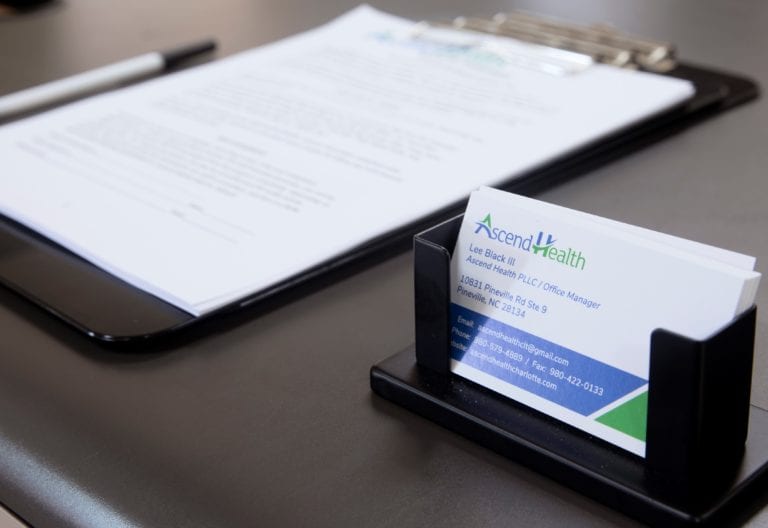Understanding Medication-Assisted Treatment (MAT)
When it comes to treating addiction, medication-assisted treatment (MAT) has emerged as an evidence-based approach that combines medication with counseling and behavioral therapies. MAT can effectively address addiction to opioids, alcohol, and tobacco, providing individuals with a comprehensive treatment plan to aid in their recovery.
What is Medication-Assisted Treatment?
Medication-assisted treatment (MAT) involves the use of FDA-approved medications in combination with counseling and behavioral therapies to treat substance use disorders. This approach recognizes addiction as a medical condition that can be effectively managed with the right treatment plan.
The medications used in MAT are specifically designed to target addiction. They work by reducing cravings, preventing withdrawal symptoms, and blocking the effects of drugs. By combining medication with counseling and behavioral therapies, MAT addresses both the physical and psychological aspects of addiction, providing individuals with a holistic approach to recovery.
Benefits of Medication-Assisted Treatment
MAT offers several benefits for individuals seeking treatment for addiction. Some key advantages include:
- Reduced drug use: Medications used in MAT have been shown to be effective in reducing drug use. They help individuals regain control over their substance use and minimize the risk of relapse.
- Decreased overdose deaths: MAT plays a crucial role in reducing overdose deaths by providing individuals with medication that can reverse the effects of opioids and prevent fatal overdoses.
- Decreased criminal activity: By addressing the underlying causes of addiction and providing effective treatment, MAT has been associated with reduced criminal activity among individuals with substance use disorders.
- Reduced infectious disease transmission: Substance use disorders, particularly those involving injection drug use, can increase the risk of infectious diseases such as HIV and hepatitis. MAT programs that include medication like methadone or buprenorphine have been shown to reduce the transmission of these diseases.
Common Medications Used in MAT
MAT incorporates the use of FDA-approved medications that have been extensively studied and proven to be safe and effective in treating addiction. Some common medications used in MAT include:
| Medication | Purpose |
|---|---|
| Methadone | A comprehensive approach to treating opioid addiction. It reduces cravings, prevents withdrawal symptoms, and helps individuals stabilize their lives. |
| Buprenorphine | Reduces cravings and withdrawal symptoms associated with opioid addiction. It can be administered as a sublingual tablet or film, or as an implant. |
| Naltrexone | Blocks the effects of opioids and reduces cravings. It can be administered orally or via an extended-release injection. |
The choice of medication depends on factors such as the type of addiction, individual needs, and medical considerations. It is essential to work closely with a healthcare professional to determine the most appropriate medication for each individual.
Understanding medication-assisted treatment (MAT), its benefits, and the common medications used is crucial for individuals seeking effective treatment for addiction. By combining medication with counseling and behavioral therapies, MAT offers a comprehensive approach to recovery, helping individuals regain control of their lives and move towards sustained long-term sobriety.
Medication Options for Addiction Treatment
When it comes to medication-assisted treatment (MAT) for addiction, several medications have proven to be effective in helping individuals on the path to recovery. These medications work in different ways to reduce cravings, withdrawal symptoms, and the rewarding effects of opioids. Let’s explore three commonly used medications in MAT: methadone, buprenorphine, and naltrexone.
Methadone: A Comprehensive Approach
Methadone is a long-acting full opioid agonist that helps relieve physiological opioid cravings and normalizes the body’s functioning impaired by illicit opioids. It can be administered in highly regulated opioid treatment programs (OTPs). When taken as prescribed, methadone is safe and effective in reducing opioid withdrawal symptoms and cravings.
The comprehensive nature of methadone treatment involves close monitoring and individualized dosing to ensure optimal results. By stabilizing brain chemistry, methadone helps individuals manage their addiction while reducing the risk of overdose and illicit drug use. It also allows individuals to engage in counseling and other psychosocial therapies, facilitating a holistic approach to recovery.
Buprenorphine: Reducing Cravings and Withdrawal Symptoms
Buprenorphine is a partial opioid agonist that reduces cravings and withdrawal symptoms without the dramatic highs and lows associated with illicit drug abuse (BHG Recovery). It is typically administered through physician office practices and OTPs. Buprenorphine is regarded as effective for less advanced or severe substance use disorder.
One of the advantages of buprenorphine is its ceiling effect, meaning that after a certain dose, increasing the amount does not produce stronger opioid effects. This helps prevent misuse and offers a safety advantage over full agonists. Buprenorphine treatment can be combined with counseling and behavioral therapies to address the underlying causes of addiction and provide comprehensive support for long-term recovery.
Naltrexone: Blocking the Effects of Opioids
Naltrexone is an opioid antagonist that blocks the activation of opioid receptors, decreasing cravings and preventing the “high” associated with opioid use. It is available as a long-acting injectable, making it a suitable option for individuals who struggle with medication adherence.
Unlike methadone and buprenorphine, naltrexone does not have any opioid properties, making it a non-addictive medication. It can be used as part of a comprehensive treatment plan to support recovery by helping individuals avoid relapse and maintain abstinence from opioids. However, it is important to note that naltrexone should only be used after the individual has successfully completed detoxification and is no longer physically dependent on opioids.
By utilizing these medication options in MAT, individuals with addiction can receive the support they need to overcome the challenges of withdrawal, cravings, and the cycle of drug use. It is important to consult with a healthcare professional to determine the most suitable medication and treatment plan based on individual needs and preferences. Additionally, integrating counseling and behavioral therapies alongside medication-assisted treatment can provide a comprehensive approach to addressing the multifaceted nature of addiction and enhancing long-term recovery outcomes.
The Effectiveness of Medication-Assisted Treatment
Medication-Assisted Treatment (MAT) is an evidence-based approach to treating addiction that combines medication, counseling, and behavioral therapies. This comprehensive approach has shown significant effectiveness in addressing addiction and supporting long-term recovery.
Evidence-Based Approach to Treating Addiction
MAT is grounded in scientific research and follows evidence-based practices. The medications used in MAT are FDA-approved and have been shown to be safe and effective in reducing drug use, overdose deaths, criminal activity, and the transmission of infectious diseases (SAMHSA). The use of FDA-approved medications, in combination with counseling and behavioral therapies, forms a comprehensive treatment plan that addresses the physical, psychological, and social aspects of addiction.
Reducing Drug Use and Overdose Deaths
MAT has demonstrated significant success in reducing illicit opioid use, overdose deaths, and criminal activity associated with substance use disorders (SAMHSA). By providing medications that mitigate cravings and withdrawal symptoms, MAT helps individuals stabilize their lives and regain control over their substance use. The medications used in MAT, such as methadone, buprenorphine, and naltrexone, have been shown to be effective in reducing opioid use disorders and supporting long-term recovery (FDA).
Addressing the Underlying Causes of Addiction
MAT goes beyond symptom management and addresses the underlying causes of addiction. By combining medication with counseling and behavioral therapies, MAT helps individuals develop coping skills, understand triggers, and address the psychological and emotional aspects of addiction. This holistic approach aims to support individuals in sustaining recovery and improving their overall well-being.
The effectiveness of MAT lies in its comprehensive and individualized approach to addiction treatment. By combining medications with counseling and behavioral therapies, MAT addresses the complex nature of addiction and provides individuals with the tools and support they need to achieve lasting recovery.
Integrating Counseling and Behavioral Therapies
In medication-assisted treatment (MAT) programs for addiction, the combination of medication, counseling, and behavioral therapies is crucial for providing comprehensive care. These additional components play a vital role in addressing the underlying causes of addiction, developing coping skills, and building support networks.
The Role of Counseling in MAT
Counseling is an integral part of MAT programs, as it helps individuals explore and address the psychological, emotional, and behavioral aspects of addiction. Through counseling, individuals can gain a better understanding of their addiction, identify triggers and coping mechanisms, and develop strategies to manage cravings and avoid relapse.
Counseling sessions are typically conducted by trained professionals, such as licensed therapists or counselors, who provide a supportive and non-judgmental environment for individuals to discuss their experiences, challenges, and goals. These sessions may involve individual therapy, group therapy, or a combination of both, depending on the needs and preferences of the individual.
The goals of counseling in MAT are to:
- Help individuals gain insight into their addictive behaviors and patterns.
- Provide education about addiction, recovery, and relapse prevention.
- Assist individuals in developing healthier coping mechanisms and stress management skills.
- Support individuals in improving their relationships and communication skills.
- Encourage self-reflection and personal growth.
By integrating counseling into MAT programs, individuals have the opportunity to work through the underlying issues contributing to their addiction and develop the necessary tools for long-term recovery.
Behavioral Therapies for Addiction Treatment
In addition to counseling, various behavioral therapies are utilized in MAT programs to further enhance the effectiveness of treatment. These therapies aim to address the thoughts, emotions, and behaviors associated with addiction, helping individuals develop healthier habits and coping strategies.
Some common behavioral therapies used in addiction treatment include:
- Cognitive-Behavioral Therapy (CBT): This therapy focuses on identifying and changing negative thought patterns and behaviors related to addiction. It helps individuals develop healthier coping skills and strategies to manage triggers and cravings.
- Motivational Interviewing (MI): MI is a collaborative approach that aims to enhance an individual’s motivation and commitment to change. It helps individuals explore their ambivalence towards addiction and build intrinsic motivation for recovery.
- Contingency Management (CM): CM utilizes positive reinforcement to encourage individuals to abstain from substance use. It involves providing rewards or incentives for meeting treatment goals, such as clean drug tests or attendance at therapy sessions.
- Family Therapy: Family therapy involves the participation of family members or loved ones in the treatment process. It helps improve communication, address family dynamics, and provide a supportive environment for recovery.
These behavioral therapies, combined with medication, create a comprehensive treatment approach that addresses the physical, emotional, and social aspects of addiction.
Developing Coping Skills and Support Networks
MAT programs also emphasize the development of coping skills and support networks. Individuals are encouraged to explore and adopt healthy strategies for managing stress, cravings, and other challenges that may arise during the recovery process.
Coping skills may include:
- Stress reduction techniques, such as deep breathing exercises or meditation.
- Engaging in physical activity or hobbies to distract from cravings.
- Seeking support from peers or attending support group meetings.
- Utilizing healthy outlets for emotions, such as journaling or art therapy.
Support networks play a crucial role in maintaining long-term recovery. These networks can consist of friends, family, support groups, or other individuals who have gone through similar experiences. Having a strong support system provides individuals with encouragement, understanding, and accountability throughout their recovery journey.
By integrating counseling, behavioral therapies, and the development of coping skills and support networks, MAT programs offer a comprehensive approach to addiction treatment. This holistic approach addresses the multifaceted nature of addiction, supporting individuals in achieving lasting recovery and improved overall well-being.
Challenges and Considerations of MAT
While Medication-Assisted Treatment (MAT) has numerous benefits in the treatment of addiction, it is important to acknowledge and address the challenges and potential drawbacks associated with this approach. These challenges include the potential drawbacks of medication use, the risk of misuse and diversion, and the need to address the stigma associated with medication use in addiction treatment.
Potential Drawbacks of Medication Use
One potential drawback of MAT is the reliance on medications for managing addiction. Some individuals may have concerns about becoming dependent on medication, raising questions about their ability to achieve long-term recovery without it. It is important to note that MAT is considered a long-term treatment approach, as it helps individuals manage their addiction and reduce cravings over an extended period of time (New Choices Treatment Centers). However, it is crucial to have open and honest discussions with healthcare professionals to address any concerns and ensure that the chosen medication is the right fit for the individual’s unique needs.
Misuse and Diversion of Medications
Another challenge associated with MAT is the potential for misuse and diversion of medications. Some medications used in MAT, such as methadone and buprenorphine, have the potential for abuse if not used as prescribed. It is essential to closely monitor medication usage and provide ongoing support to individuals receiving MAT to minimize the risk of misuse. Healthcare professionals play a crucial role in ensuring the appropriate use of medications and implementing strategies to prevent diversion.
Addressing Stigma in Addiction Treatment
Stigma surrounding addiction and medication use can be a significant barrier to seeking and receiving MAT. The misconception that using medication to treat addiction is merely substituting one addiction for another can prevent individuals from accessing the care they need. It is essential to educate the public and healthcare providers about the evidence-based nature of MAT and its effectiveness in supporting recovery (New Choices Treatment Centers). By addressing and challenging the stigma associated with medication use, individuals can feel more empowered to pursue MAT as part of their journey towards recovery.
In conclusion, while MAT is an effective approach for addiction treatment, it is crucial to recognize and address the challenges and potential drawbacks associated with this treatment modality. By ensuring proper medication management, addressing the risk of misuse and diversion, and combating stigma, individuals can receive the full benefits of MAT and work towards sustainable recovery.



